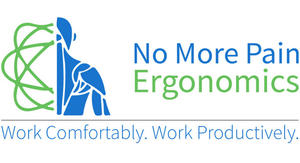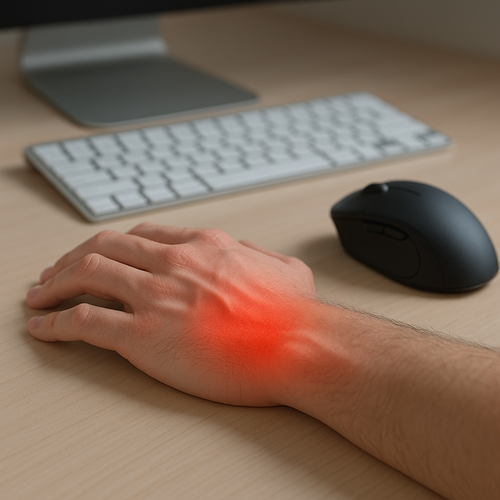Prolonged use of a computer can lead to aches and pains in various parts of the body, including the forearms. Aches and pains in the forearms can be caused by a variety of factors, including improper ergonomics, repetitive movements, and muscle imbalances. Here are some of the reasons why your forearm aches when using your computer:
-
Poor ergonomics: Sitting in a chair that is not adjusted to your body and posture, or using a computer mouse or keyboard that is not positioned correctly, can cause aches and pains in the forearms. This is because improper ergonomics can put unnecessary strain on the muscles and tendons in the forearms.
-
Repetitive movements: Repetitive movements, such as typing or using a mouse for prolonged periods of time, can cause aches and pains in the forearms. This is because repetitive movements can cause the muscles and tendons in the forearms to become overworked and fatigued.
-
Muscle imbalances: Sitting at a computer for prolonged periods of time can cause muscle imbalances in the forearms. This is because some muscles are overworked while others are underused, leading to pain and discomfort.
-
Poor posture: Poor posture can cause aches and pains in the forearms. This is because poor posture can put unnecessary strain on the muscles and tendons in the forearms, leading to pain and discomfort.
-
Carpal Tunnel: Carpal Tunnel is a condition that causes pain, numbness, and tingling in the hand and fingers. It is caused by a pinched nerve in the wrist and can be caused by prolonged repetitive motions.
-
Tennis elbow: Tennis elbow is a condition that causes pain and tenderness on the outer side of the elbow. It is caused by overuse of the tendons that attach the muscles of the forearm to the elbow.
To reduce the risk of aches and pains in the forearms, it's important to practice proper ergonomics, take regular breaks, stretch and exercise your forearms, and maintain good posture. It's also important to seek medical attention if the pain persist or worsen.
In conclusion, aches and pains in the forearms can be caused by a variety of factors, including poor ergonomics, repetitive movements, muscle imbalances, poor posture, carpal Tunnel and Tennis elbow. By understanding the causes of aches and pains in the forearms and taking steps to prevent them, you can reduce the risk of pain and discomfort and improve your overall work experience.
















← Older Post Newer Post →
0 comments
Get in Touch
Still have a question or simply want to discuss what ergonomic products are best suited? Get in touch, our expert team is available to provide free advice and support.